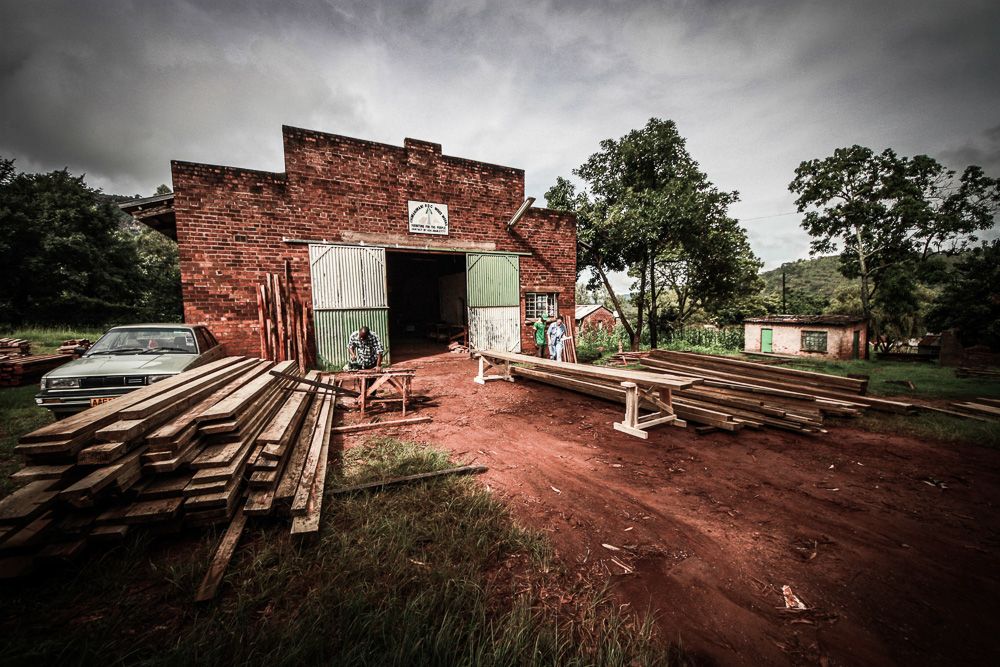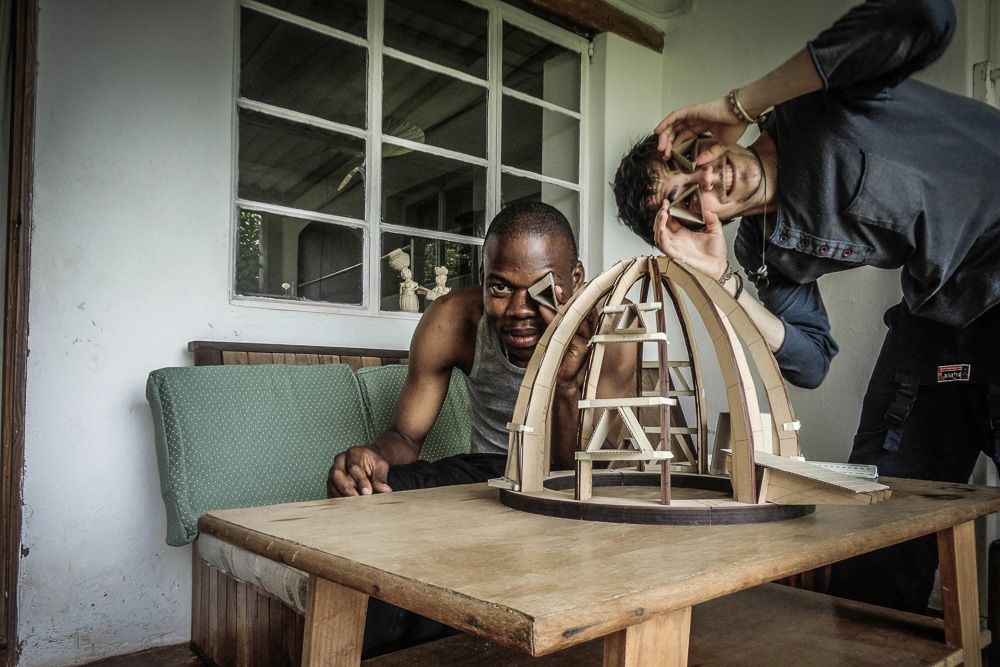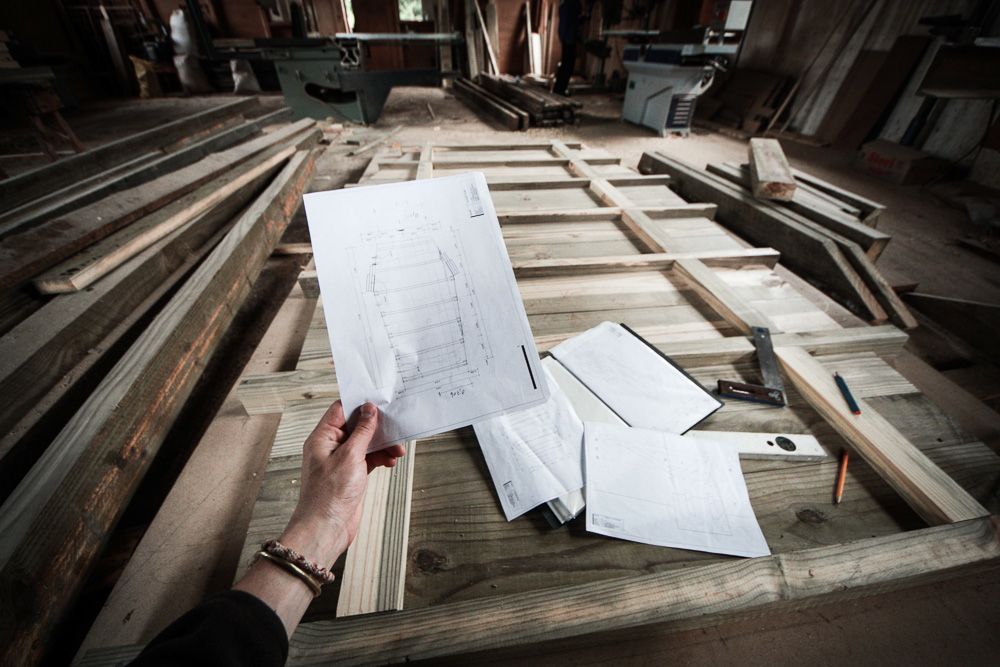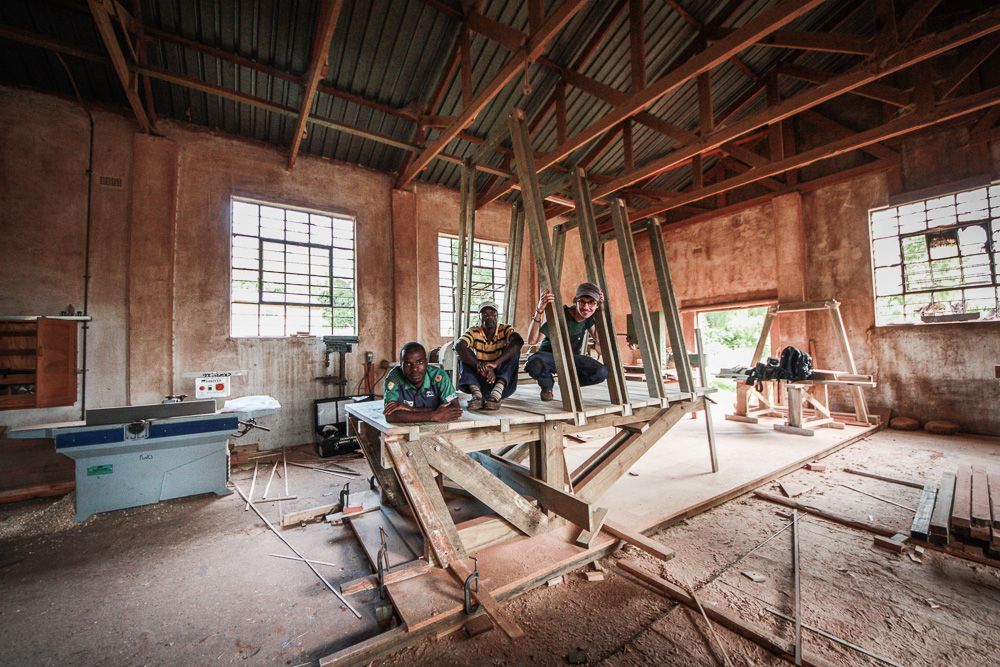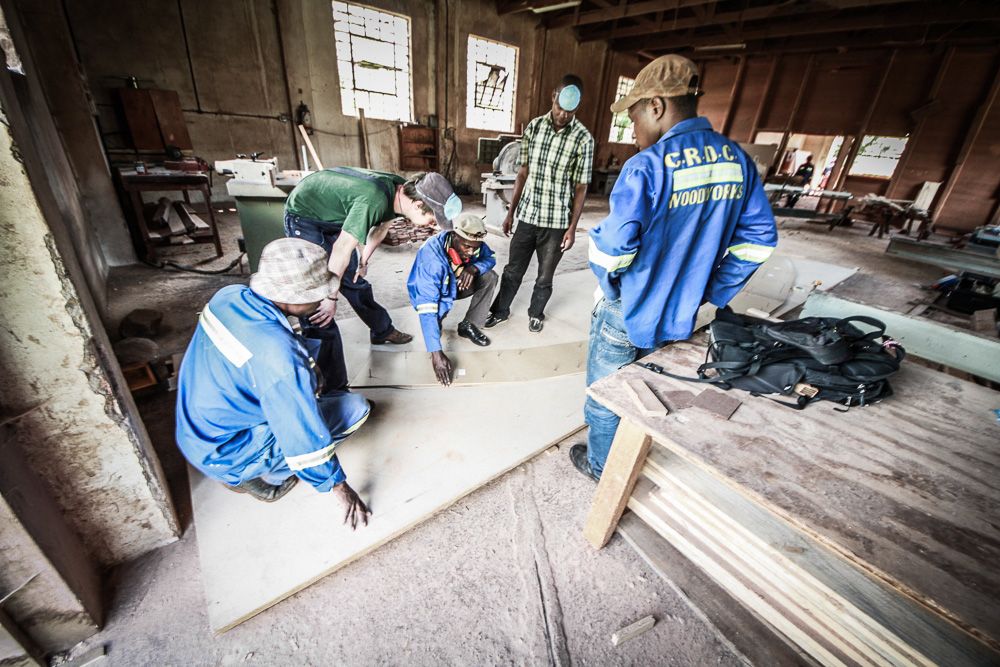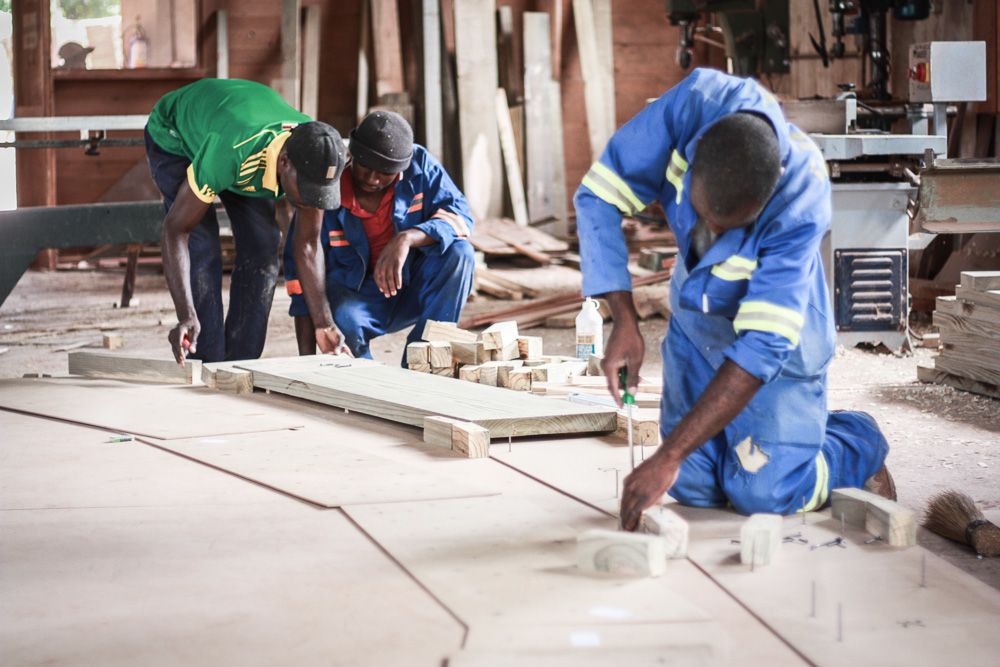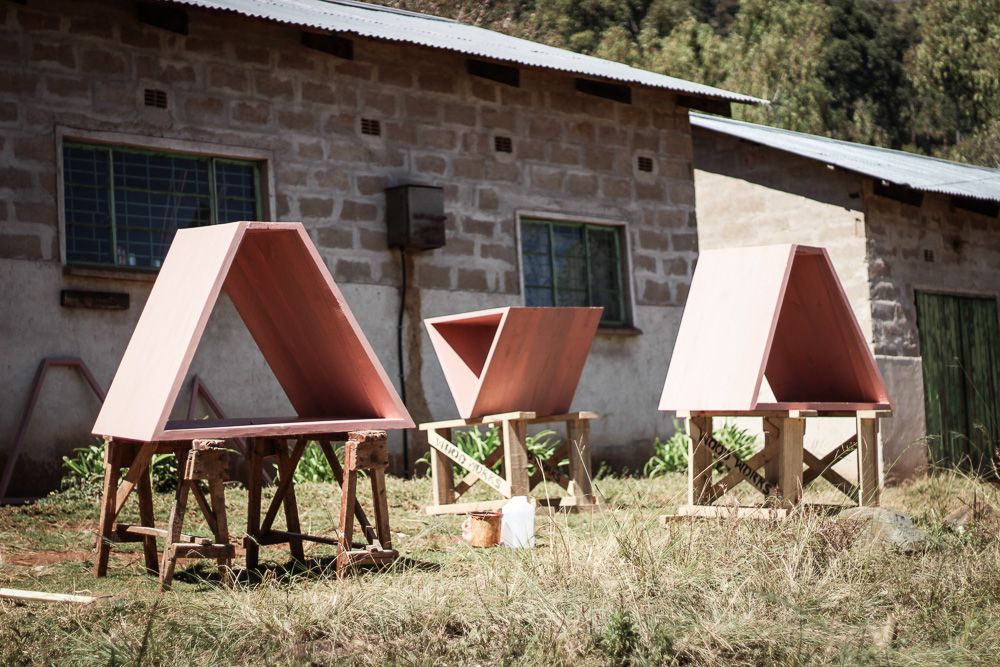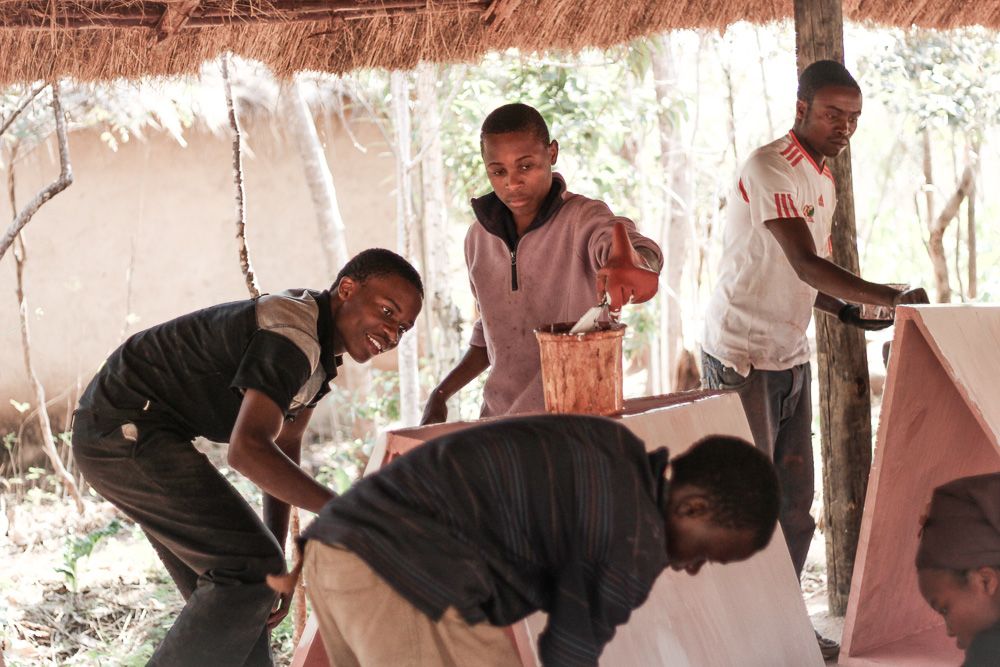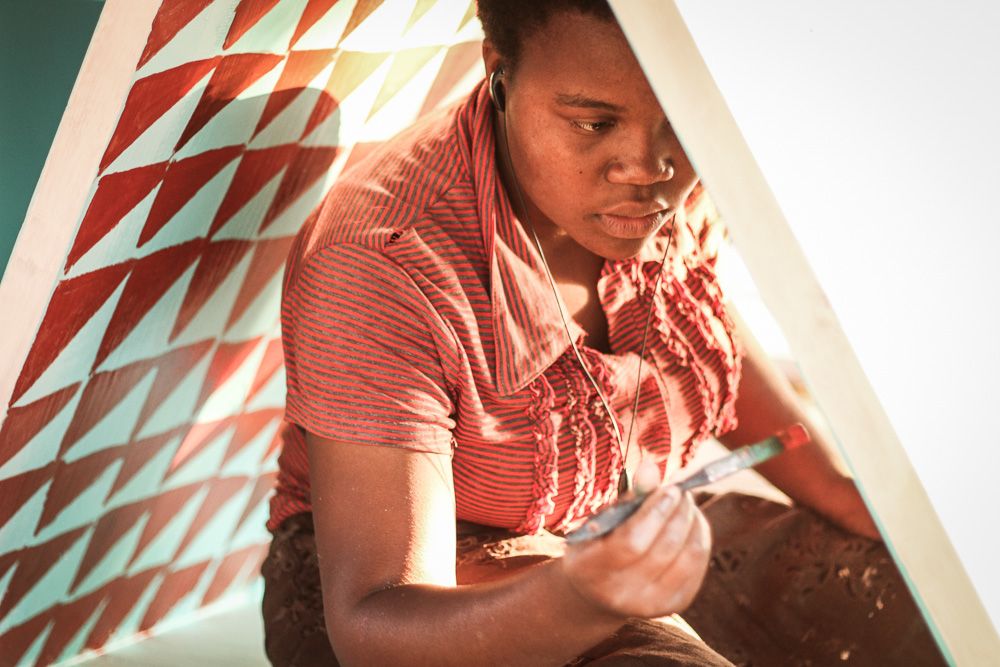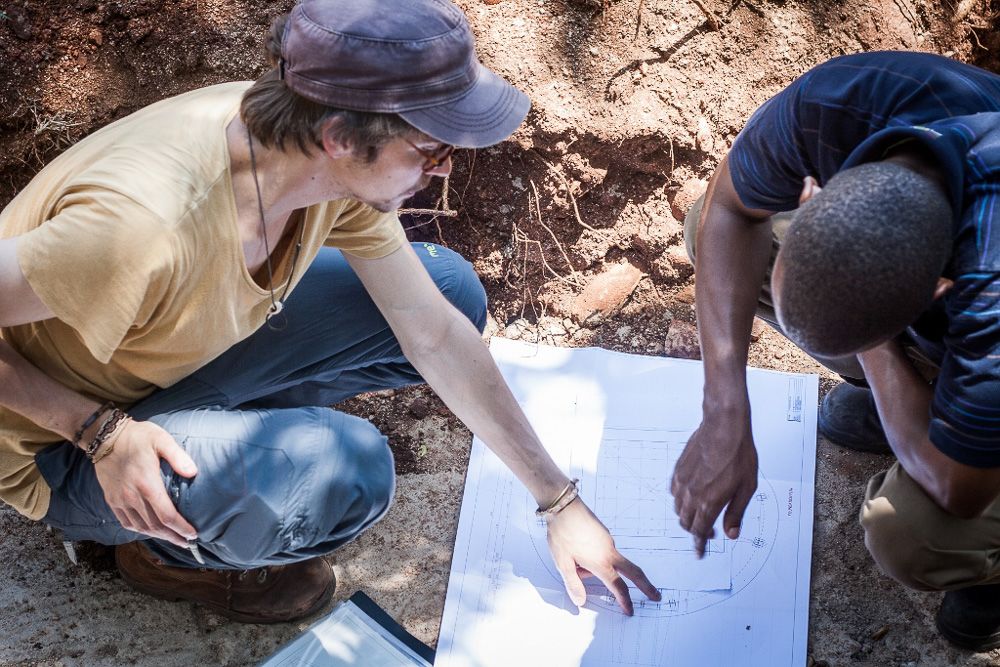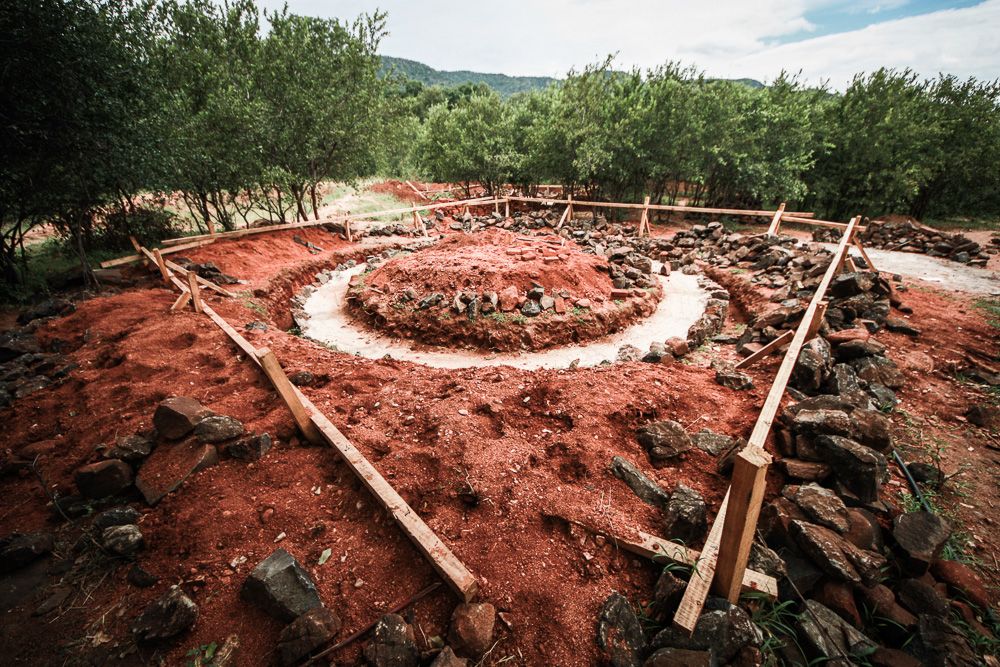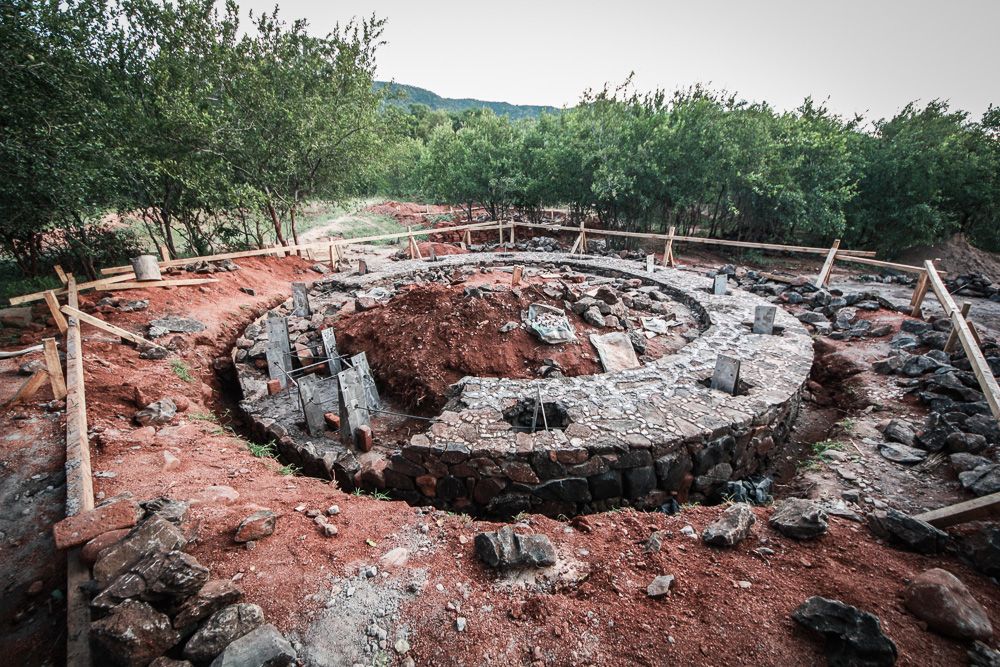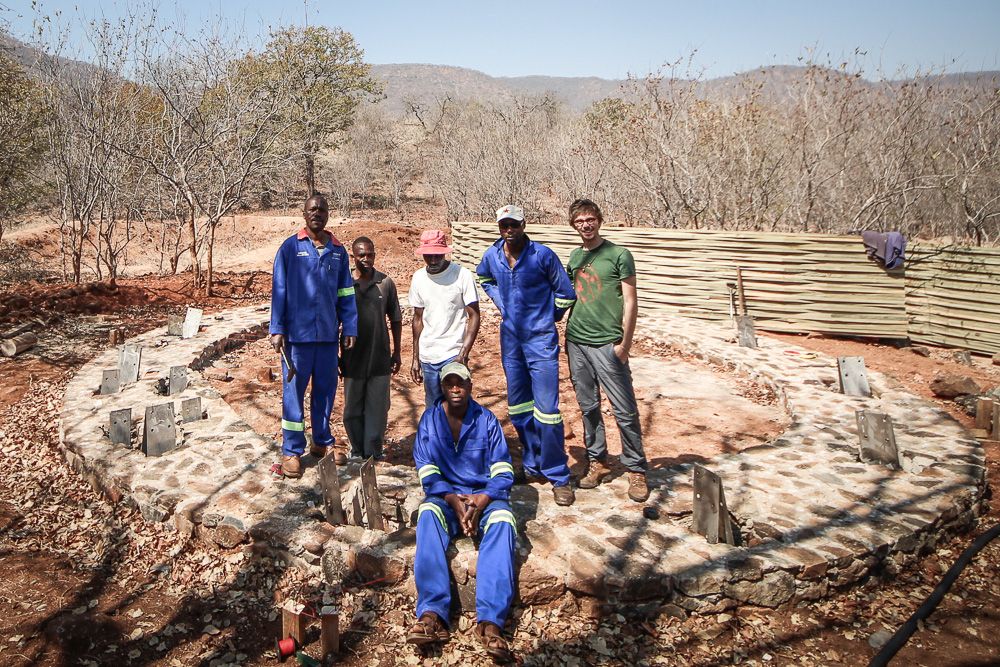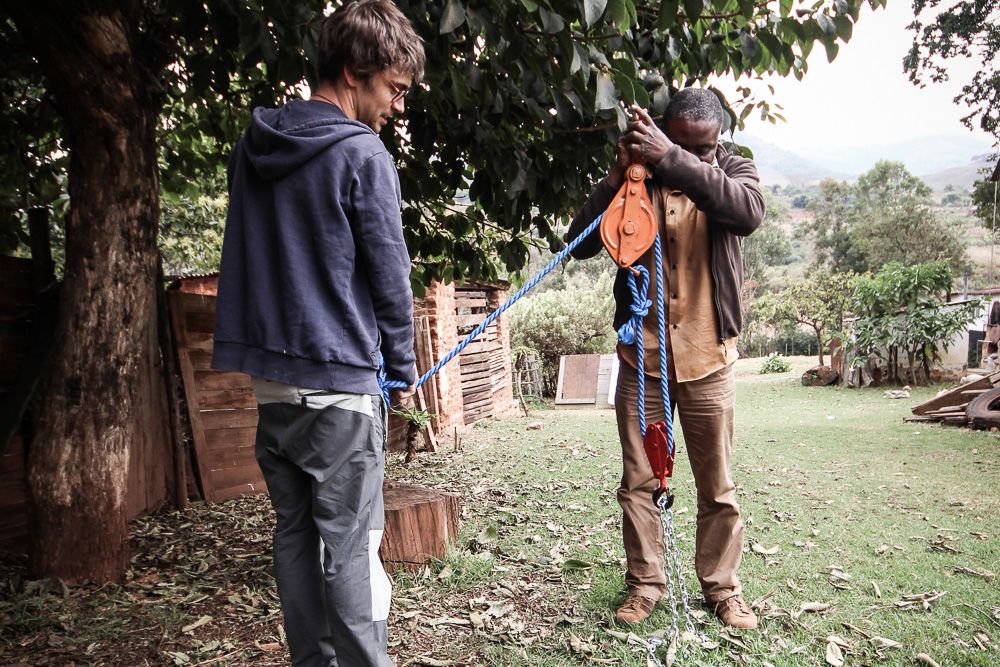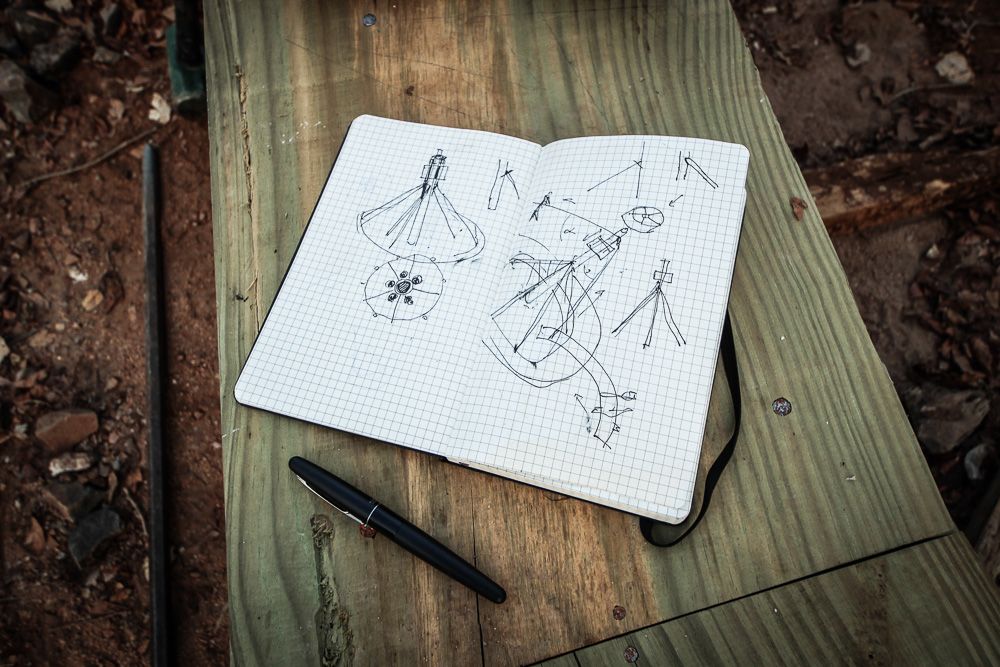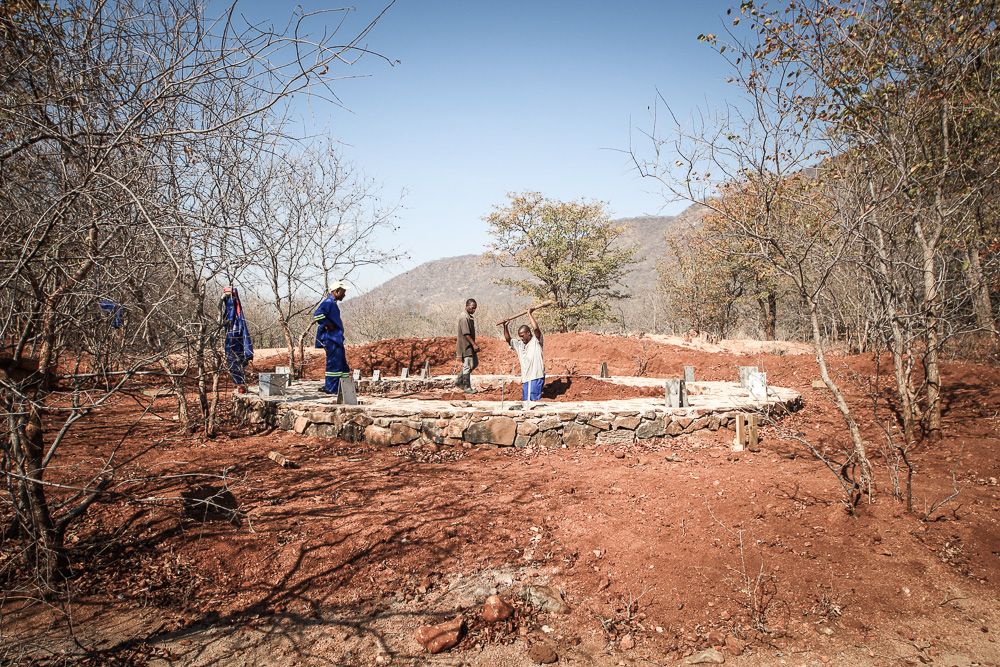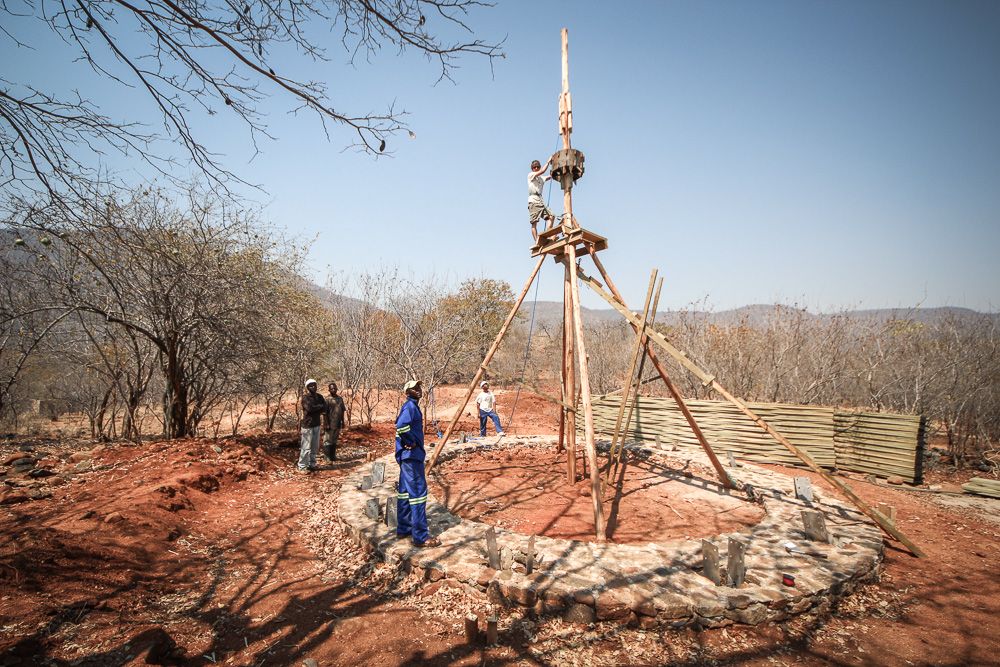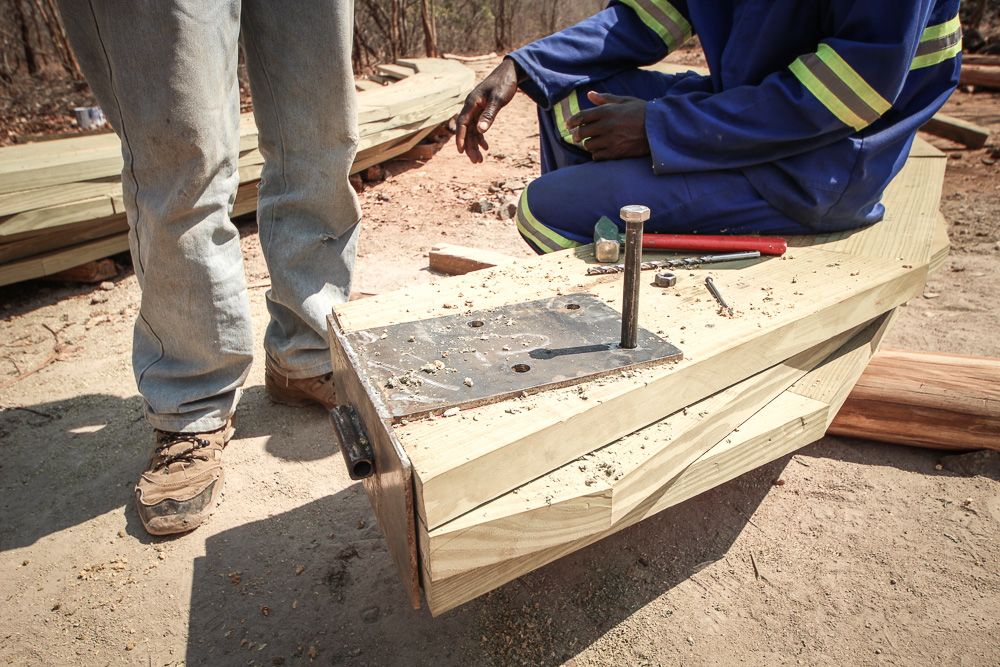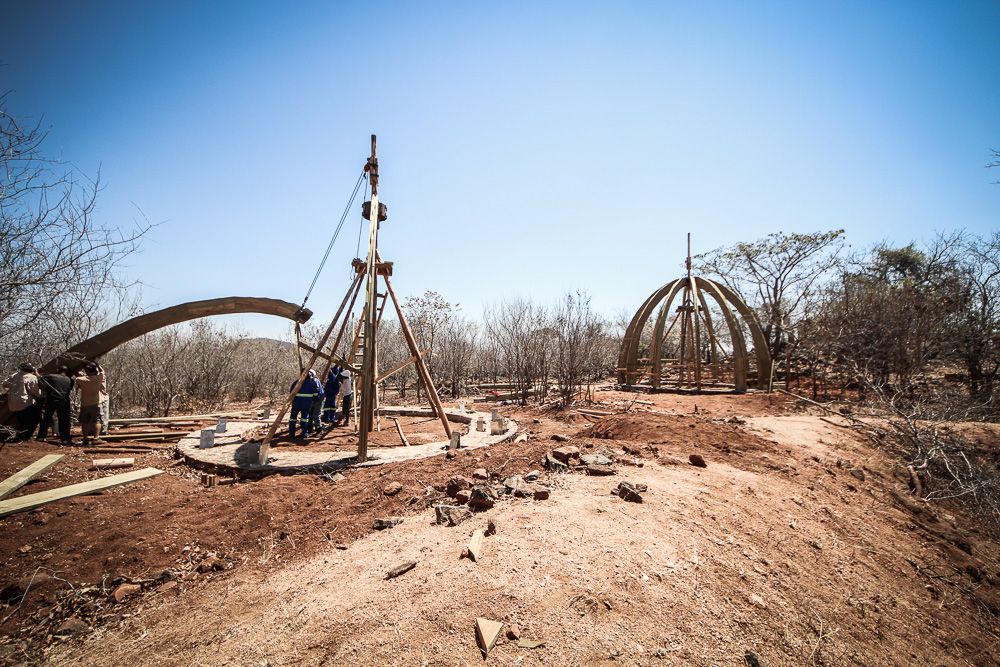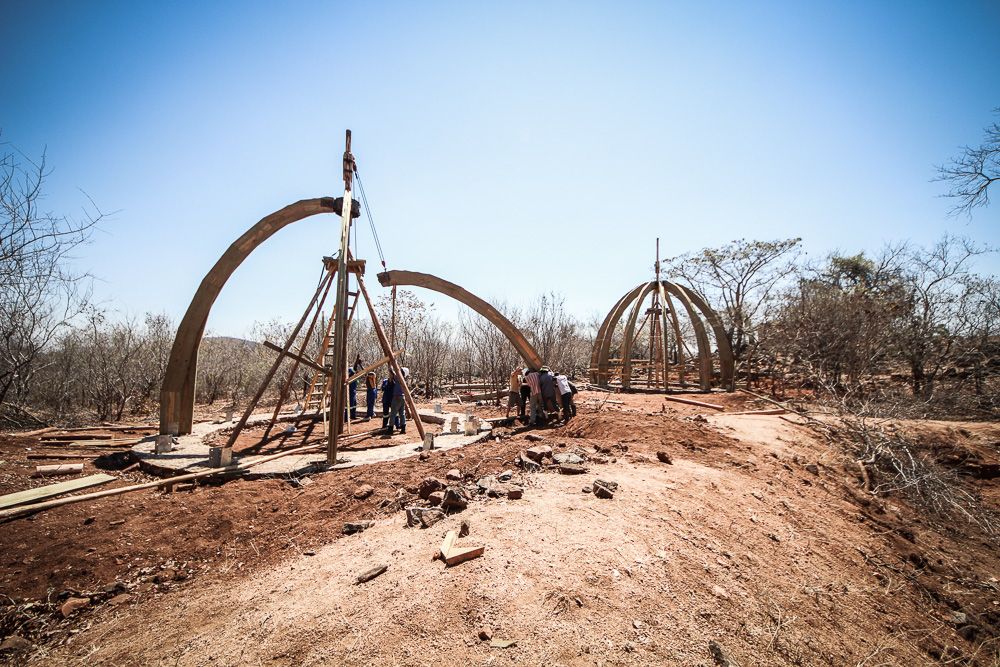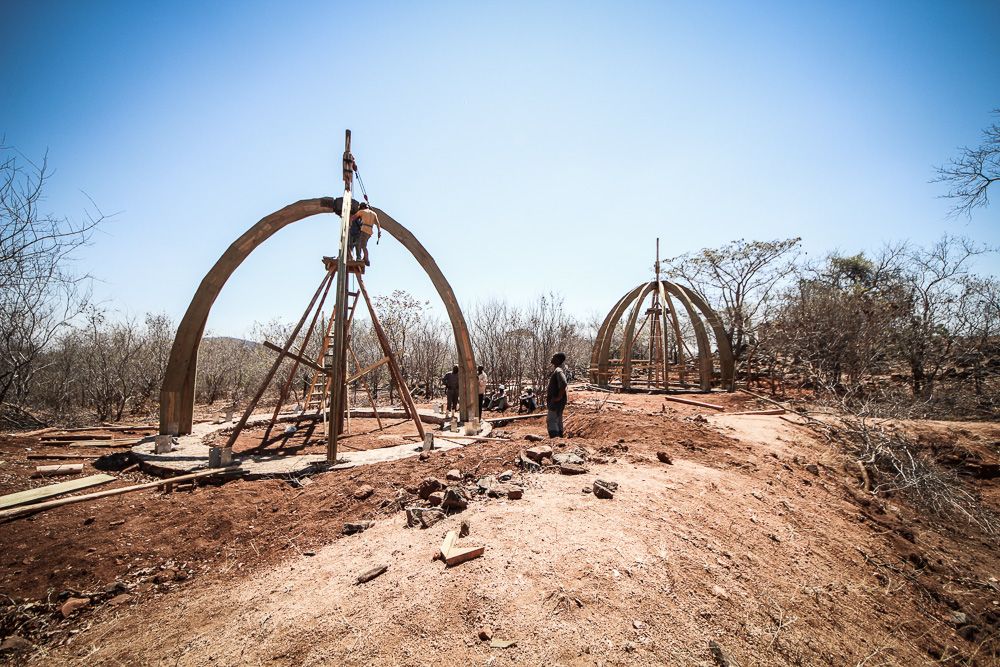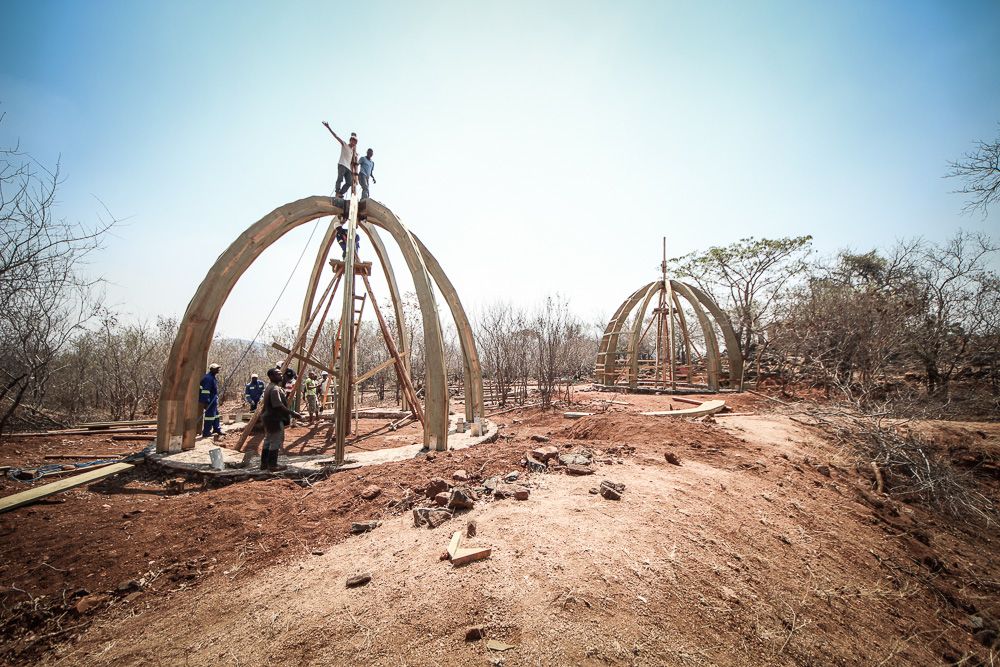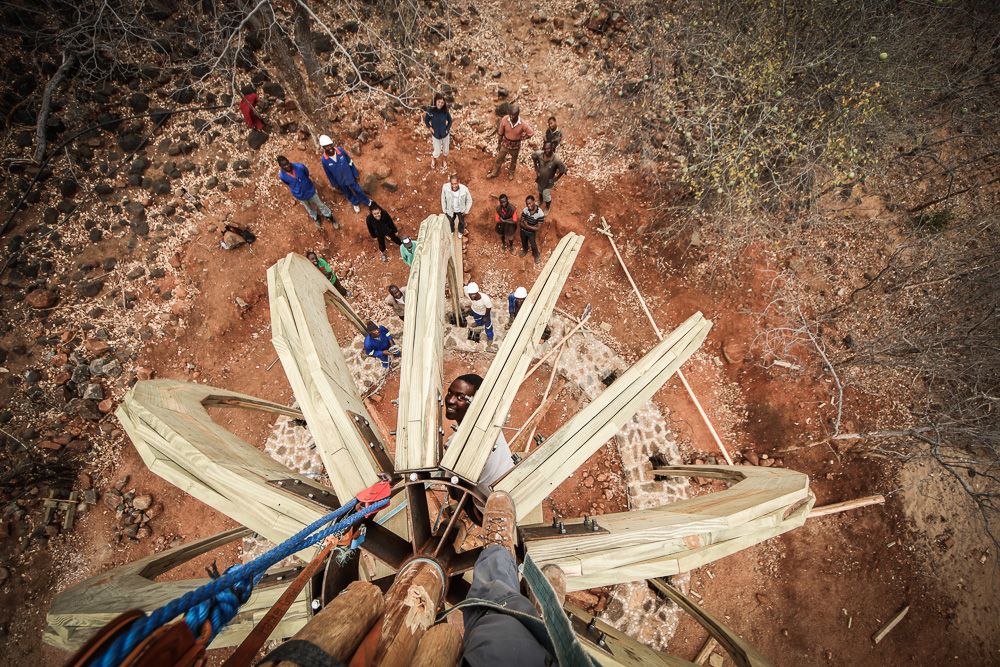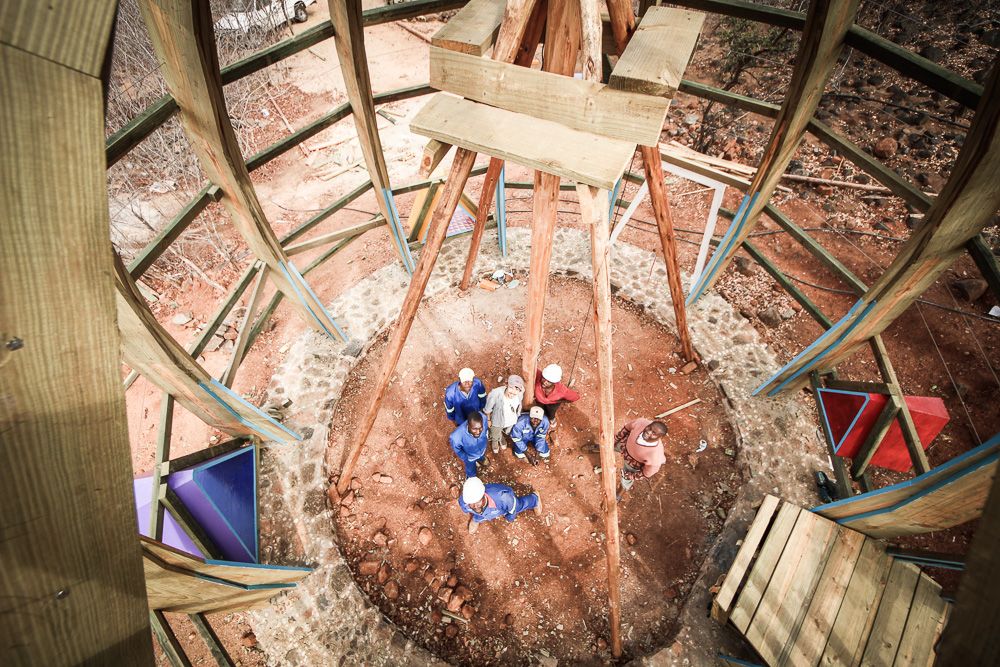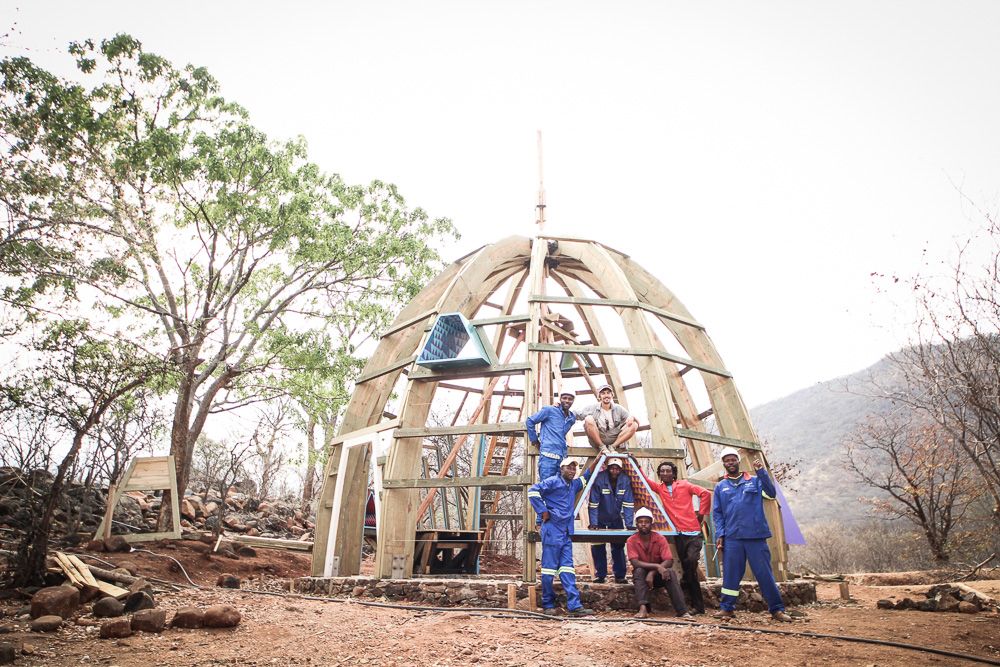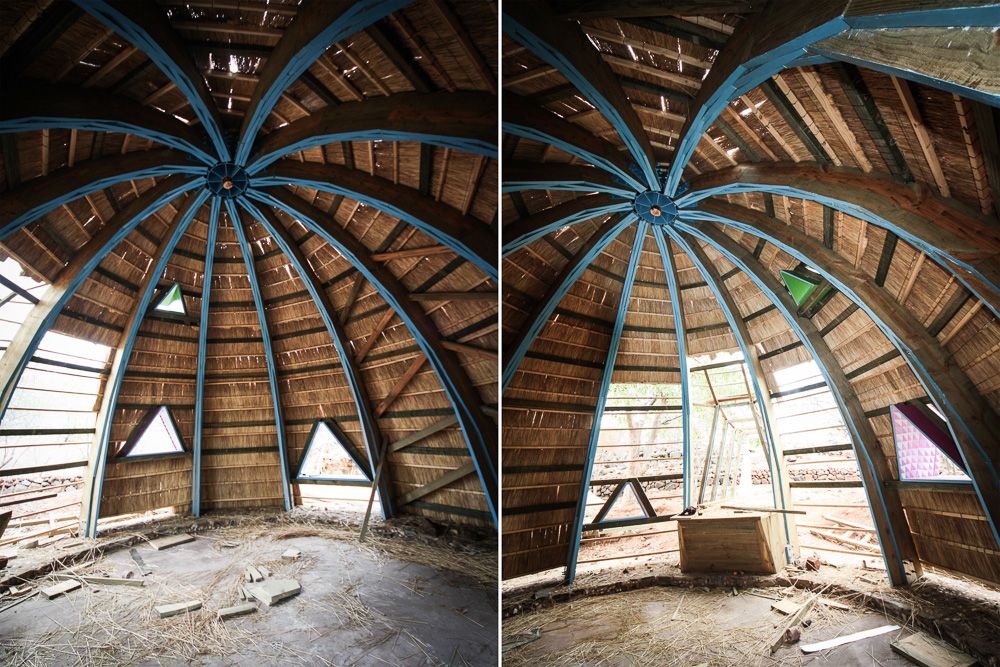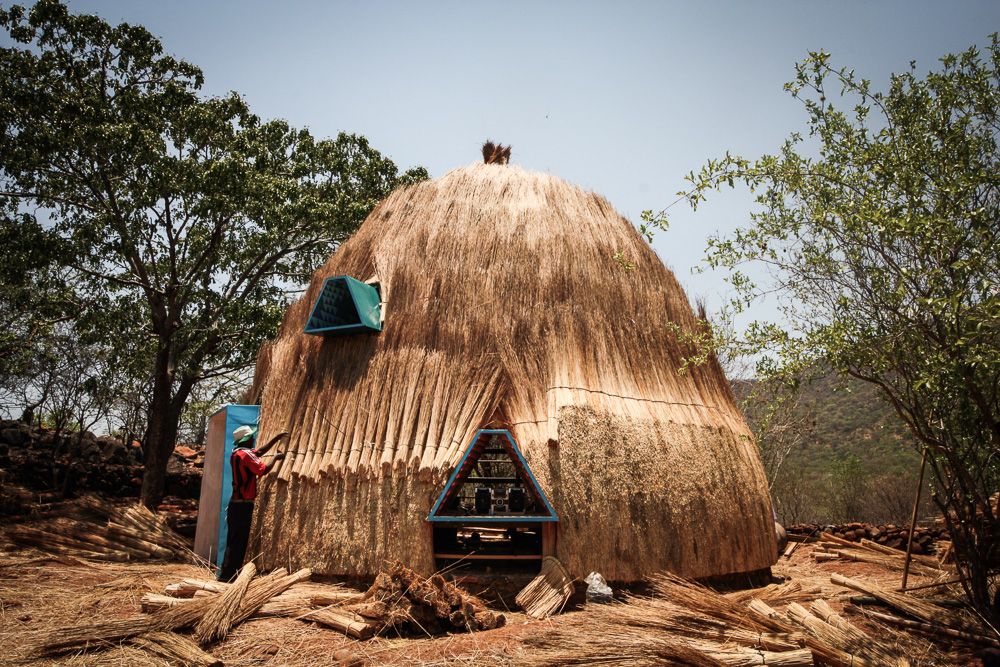PORET KINDERGARDEN
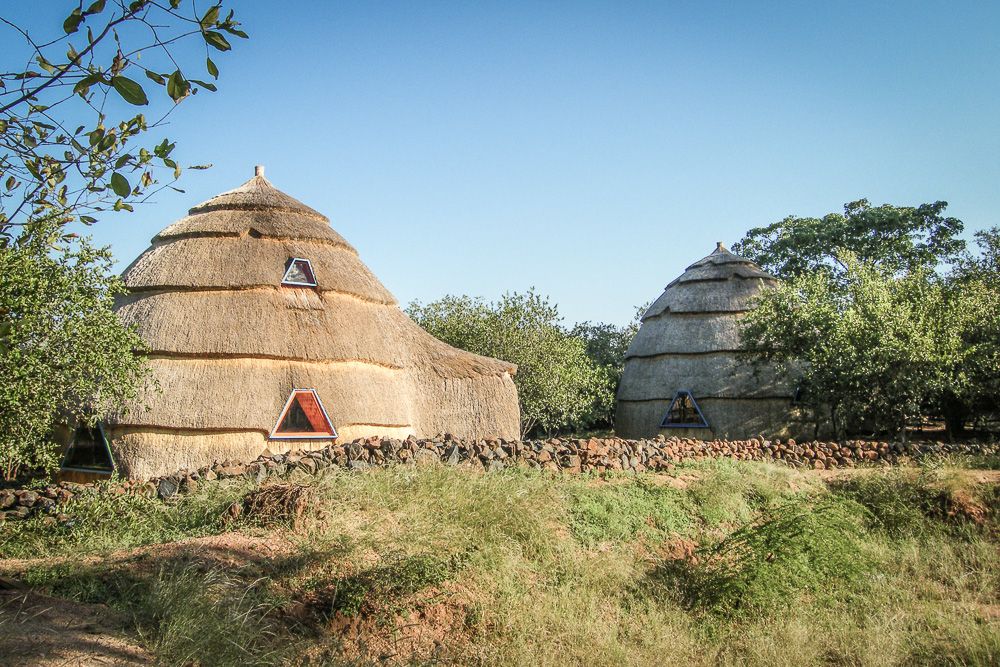
*COLLABORATION
- Project: Studio Anna Heringer
- Site management, architectural and technical planning: Stefano Mori
The Project
The kindergarten is part of a Permaculture-Education-Centre in Zimbabwe, and is conceived within this self-sufficiency philosophy: erected out of timber, thatch, and stone this project provides children a playground to get acquainted with the principles of nature while implementing them in daily life. It’s a pilot project of a sustainable way of building that will revive the region’s local crafts and know-how.
The permaculture community PORET in Zimbabwe has followed the philosophy of holistic sustainability since 1996. With care, patience, time, and seeds, and without any external help they transformed a very dry area into a little fertile paradise. Within their principles, they reached as far as they could, but up till now, they lacked building knowledge in the same holistic approach. The PORET-kindergarten will thus be the first one erected, acting as a pilot project, (re)generating local craftsmanship and building know-how. Furthermore, it is the first kindergarten in the whole rural area of the Chimanimani District, a desolate region that houses about 200 families without any access to education.
The kindergarten is strongly integrated with the permaculture activities on site. The children will learn from the very beginning to take care of plants, to be gentle with the soil, to harvest water, and to understand the needs of nature. Apart from this the community also facilitates the personal development of their inhabitants, therefore the two structures will be used as training and meeting spaces for the inhabitants of the surrounding villages as well.
Founded on a stone base, timber was chosen for the main structure, as Zimbabwe is known for its forestry and the community supports tree plantation. Once completed, the wood structure will be covered by thatching as there is a strong tradition of technically excellent and beautifully thatched roofs in the country. Furthermore, the traditional way of cutting the grass for thatching reduces the region’s fire hazard, meanwhile performing well in low rainfall areas where the climate can be harsh. Our aim is thus to rebuild this knowledge since it is vital for the overall housing condition.
As both the thatching and the stonework are labor intensive, the craftsmen are getting a good share of the building budget. With these local techniques, the project aims to build a process that reinforces solidarity and team spirit, skills and knowledge, self-confidence, and dignity. Due to the context of climate and local conditions buildings, unless built in glass and steel, will not last forever, but it is essential that the know-how to maintain and rebuild them is kept alive and traded on to the following generations. This is why we see this project primarily as training in advanced building techniques with existing materials that can become the compost of the kindergarten field one day.
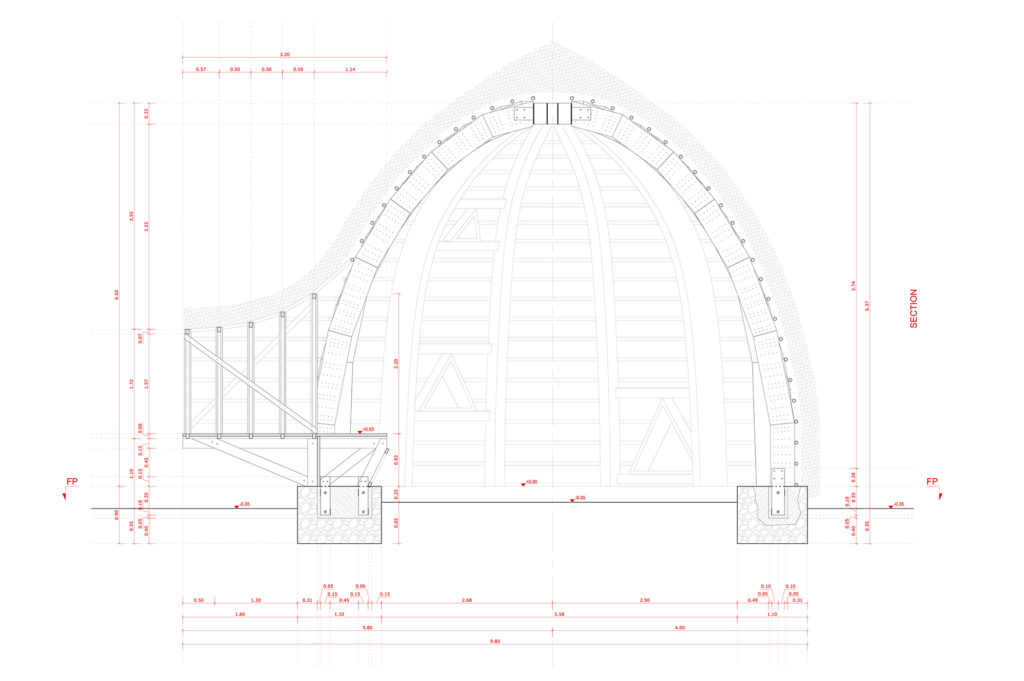
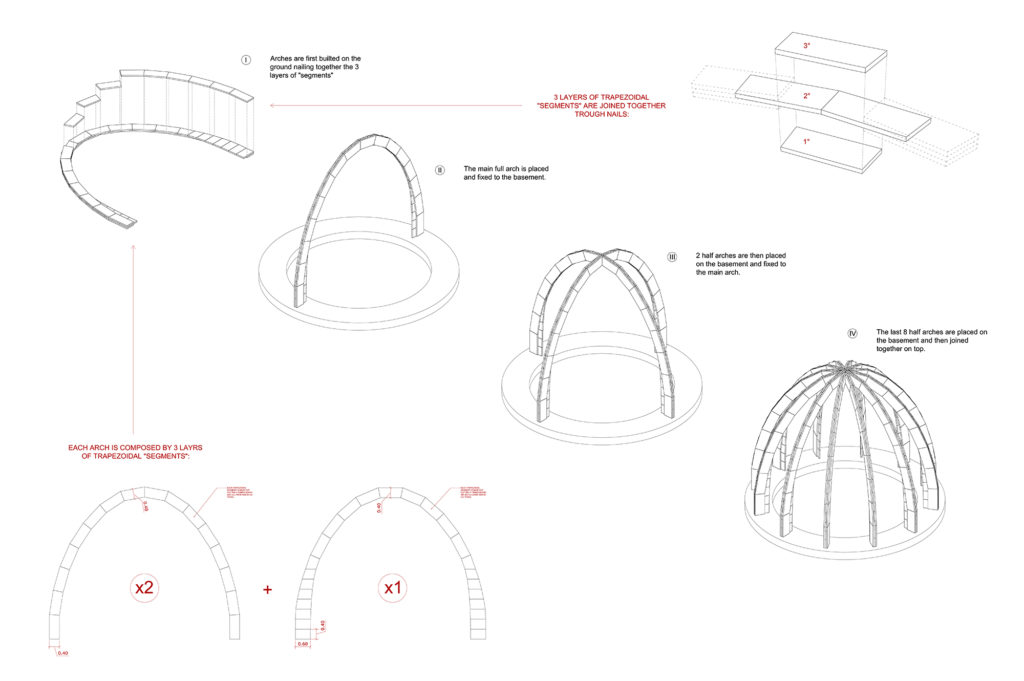
The Facts
- Built area: 52 sqm (26 sqm for each building)
- Materials/techniques: stone foundation, timber structure, thatched roof/walls (straw)
- Construction: January 2014 – November 2014
- Site: Chaseyama, Zimbabwe
- Client: permaculture community PORET, Zimbabwe
- Sponsor: Omicron Electronics
- Site management, architectural and technical planning: Stefano Mori
- Engineering: Laurence Kisuule
- Consulting: Susanne Menzel (carpentry), Bernhard Fäth and Joe Heringer (timber structure)
- Coordination: Margarethe Holzer, Julious Piti
- Photo credits: Stefano Mori
- Text credits: Studio Anna Heringer



